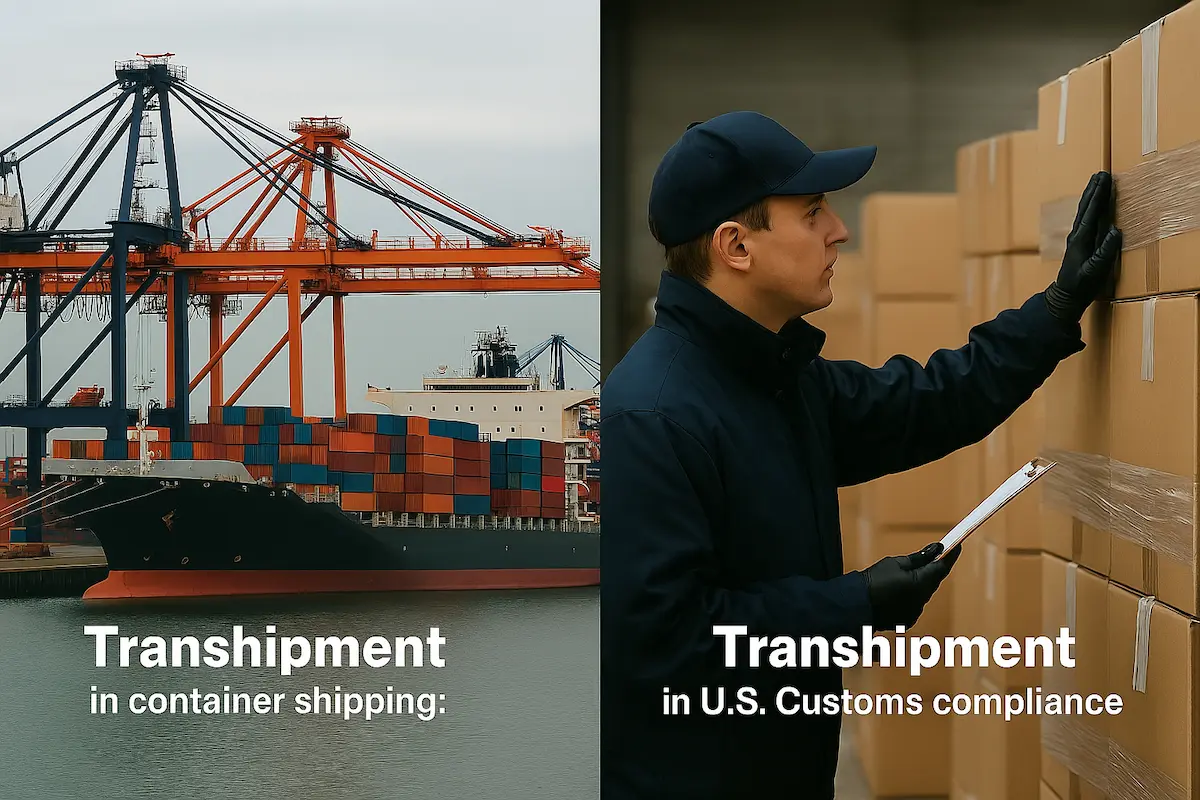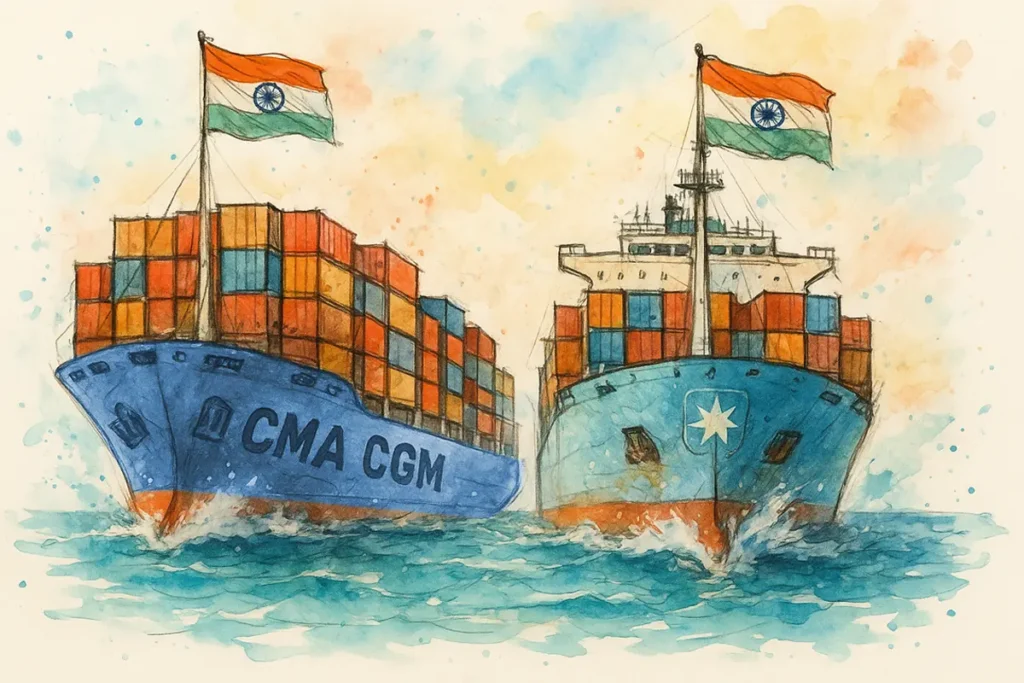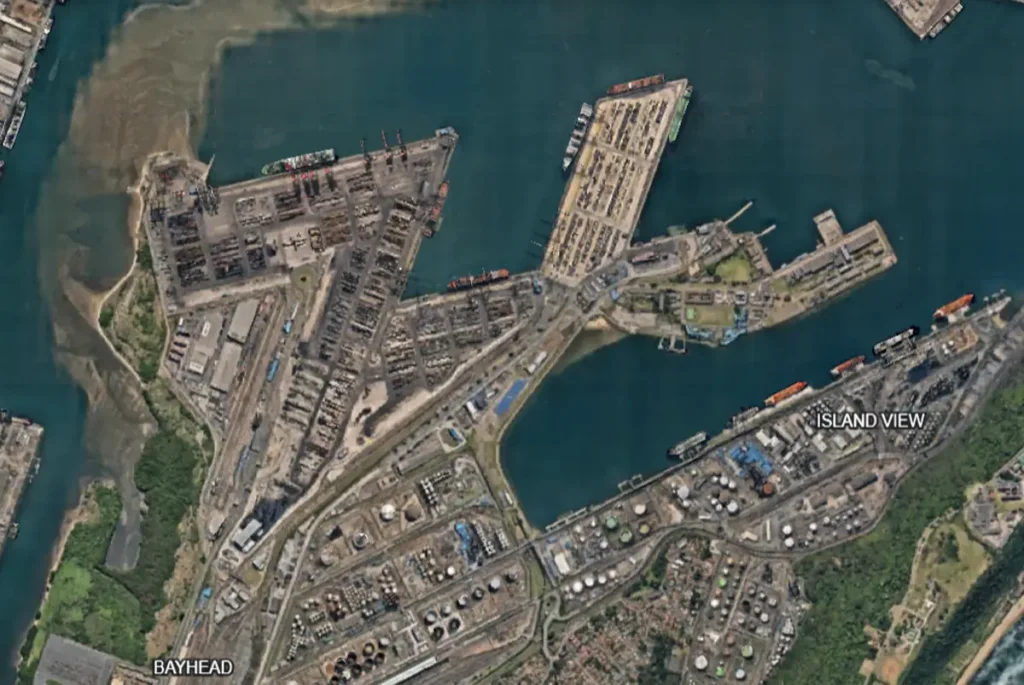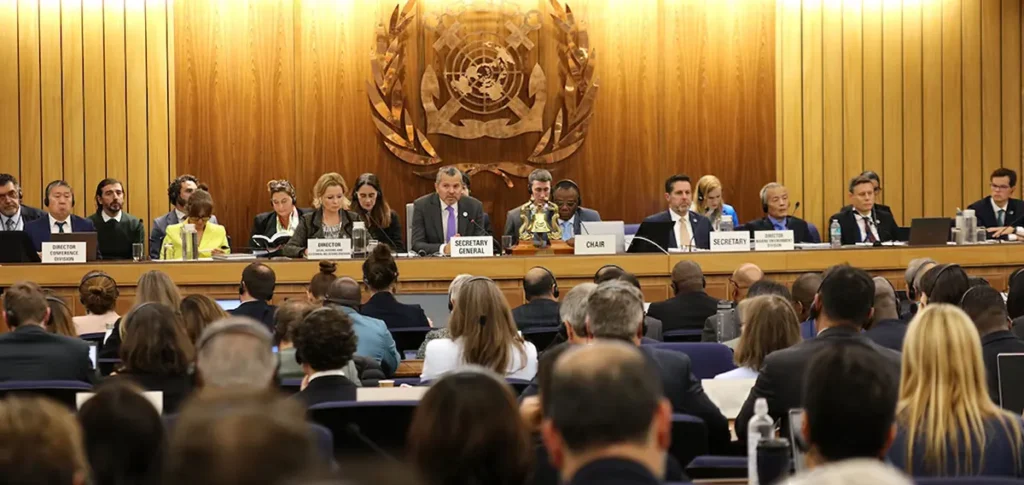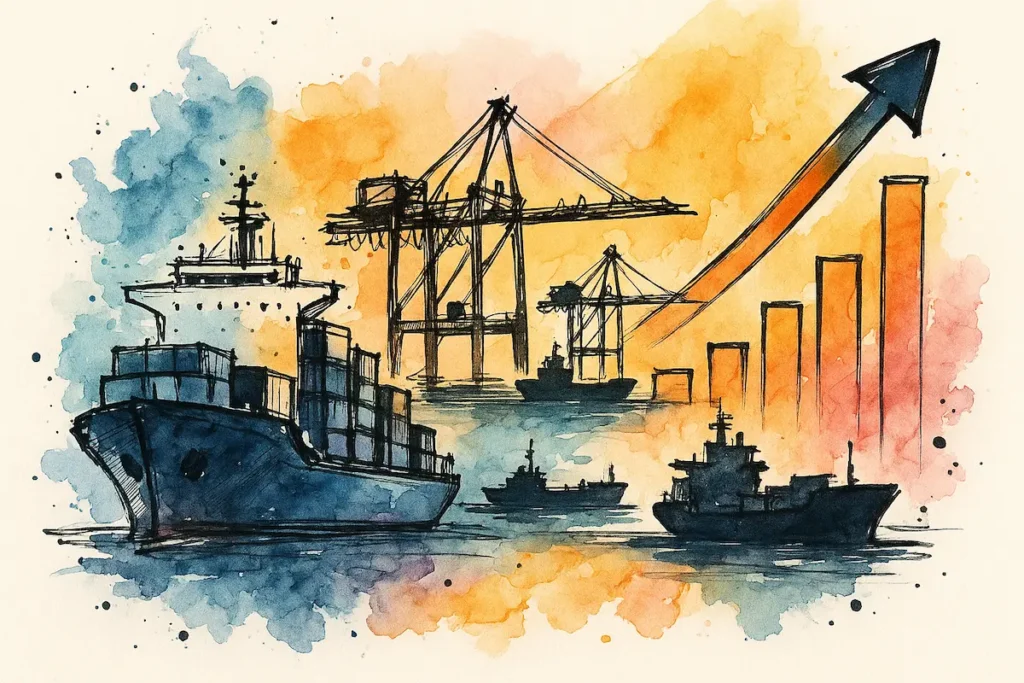“Transhipment” is one of the most used words in global shipping, but it carries two very different meanings.. For many in logistics, it describes a routine, legal, and essential practice of transferring goods between ships..
For customs authorities in the USA, “Transhipment” means something very different: a fraudulent scheme to conceal a product’s true origin to avoid tariffs or trade remedies..
Depending on the context, this single word can refer to a routine container transfer at a port or a red-flag compliance issue that triggers customs scrutiny and penalties.
Here is an explanation on the two distinct meanings of transhipment, how they apply in trade and customs compliance, and why importers, freight forwarders, and logistics professionals must understand the difference, especially when dealing with U.S. Customs and Border Protection (CBP)..
Transhipment in container shipping: A routine port operation
In the container shipping industry, transhipment refers to the transfer of cargo from one vessel to another at an intermediate port en route to its final destination..
This is a standard practice when direct shipping routes are unavailable or when hub-and-spoke models are used to optimize vessel deployment..
Example: A container shipped from Durban to Manila may be transhipped in Singapore, where it is offloaded from Vessel A and reloaded onto Vessel B..
This form of transhipment is:
• Operational
• Common across global ports
• Not inherently problematic from a customs standpoint
It’s a logistical necessity, not a compliance risk..
Transhipment in U.S. Customs compliance: A risk trigger
In contrast, U.S. Customs and Border Protection (CBP) uses the term transhipment in a very specific and regulatory context.. It refers to the movement of goods through a third country to disguise or obscure the true country of origin, often to circumvent duties, quotas, or sanctions..
According to CBP’s Informed Compliance Publication, transhipment is a red flag when:
• Goods are routed through a third country without remaining under customs control
• They undergo operations beyond mere unloading or reloading
• The intent is to alter or obscure the country of origin
Example: Chinese-origin goods shipped to the U.S. via Malaysia and falsely declared as Malaysian origin to avoid Section 301 tariffs..
CBP’s recent advisory warns importers that such practices are subject to enforcement, including:
• Seizures
• Penalties
• Loss of preferential treatment under trade agreements
CBP applies the substantial transformation test to determine if routing through a third country genuinely changes origin.. If the goods do not undergo meaningful processing resulting in a new and different product with a new name, character, or use, the origin does not change.
CBP has explicitly warned importers, “Importers are responsible for ensuring accurate country-of-origin declarations to CBP, and cannot avoid paying tariffs by routing goods through another country without substantial transformation.”
Enforcement includes marking duties of 10% ad valorem for failures, civil penalties under Section 1592 of the Tariff Act, and even criminal prosecution.. CBP uses data analytics, inspections, and international cooperation to identify and prosecute fraud..
Country of origin marking: Why it matters
Country-of-origin marking requirements have a clear purpose: to ensure transparency for the U.S. consumer.. When a product enters the U.S. market, its ultimate purchaser must be able to know, at a glance, where it was made..
This principle is grounded in Section 304 of the Tariff Act of 1930 (19 U.S.C. 1304), which requires that every imported article (or its container) be marked in a manner that indicates its country of origin to the ultimate purchaser in the U.S..
Under 19 U.S.C. §1304, all foreign-origin goods imported into the U.S. must be legibly marked with the English name of the country of origin, unless exempted. CBP defines country of origin as the country of manufacture, production, or growth, not the country of export or transhipment.
If goods are altered in a third country, CBP applies the substantial transformation test to determine origin. This means:
• A new article must emerge with a different name, character, or use
• Mere repackaging or minor processing does not change origin
For example, if Chinese LCD screens are assembled into a display module in Mexico, CBP may rule that Mexico is the country of origin, only if the transformation meets the legal threshold.
How countries define and enforce Country-of-Origin rules
Different countries define and enforce country of origin rules with varying degrees of strictness..
United States
- Among the strictest globally
- Requires permanent, legible marking
- Applies substantial transformation and tariff shift tests
- Enforces penalties for deceptive transhipment
Reference: CBP Guidance
Canada
- “Made in Canada” requires 51% domestic cost
- “Product of Canada” requires 98% domestic content
- Misuse of Canadian symbols (e.g., maple leaf) is regulated
Reference: Canadian Competition Bureau
European Union
- Uses the last substantial transformation rule
- Less strict than the U.S.
- Textile origin rules are more lenient
Reference: EU Customs Guidance
Switzerland
- “Swiss Made” requires 60–80% domestic content, depending on product type
Reference: Swiss Federal Institute of Intellectual Property
Australia
- “Made in Australia” requires the last substantial transformation
- No minimum domestic content threshold
Reference: Australian Made Campaign
How the term ‘Transhipment’ varies across borders
Most countries use transhipment in the logistics sense, as a transfer of cargo between vessels or modes of transport. The compliance definition used by CBP is more specific and enforcement-driven.
For example:
- The EU does not treat transhipment as a compliance violation unless the origin is misdeclared
- Singapore and Hong Kong are major transhipment hubs but do not impose origin marking requirements unless goods are imported for domestic consumption
In short, CBP’s definition is unique in its legal and enforcement implications..
Conclusion
For importers, freight forwarders, and compliance professionals, understanding the dual meaning of transhipment is more than semantics, it’s a matter of legal exposure and operational integrity..
• In shipping, transhipment is routine
• In compliance, transhipment can be a violation
As the US Customs enforcement tightens and origin marking rules evolve, clarity on this distinction is essential..
Want more of these insights..??
Subscribe to the resource for expert analysis, regulatory updates, and global trade intelligence and stay ahead of compliance risks and industry shifts..

